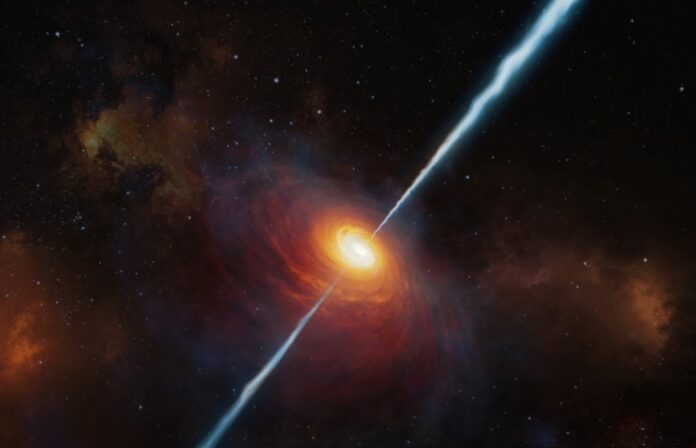New Study Solves the Mystery of Quasar Brightness: A Milestone for Astronomy
Astronomers have finally unraveled a 60-year-old mystery surrounding quasars, which are the most powerful objects in the Universe. Despite shining as brightly as a trillion stars crammed into a volume the size of our Solar System, the reason behind their immense activity remained unknown until now.
After observing 48 galaxies hosting quasars and comparing them to over 100 non-quasar galaxies, scientists found that the phenomenon is triggered by the collision of galaxies.
Quasars represent one of the most extreme occurrences in the Universe, and their characteristics may foreshadow the future of our own Milky Way galaxy. It’s possible that what we observe in quasars could provide a glimpse of what will occur when the Milky Way collides with the Andromeda galaxy, a scenario predicted to take place in approximately five billion years.
Quasars were first discovered 60 years ago, and their ability to shine as brightly as a trillion stars crammed into a space no larger than our Solar System has remained a mystery. However, a recent study led by scientists from the Universities of Sheffield and Hertfordshire has uncovered the reason behind this powerful activity – galaxy collisions.
Using deep imaging observations from the Isaac Newton Telescope located in La Palma, the researchers detected distorted structures in the outer regions of galaxies hosting quasars, indicating that these galaxies were colliding. This discovery sheds light on the long-standing puzzle of the origins of quasar activity.
It is a common occurrence for supermassive black holes to reside at the centers of most galaxies. These galaxies also harbor large quantities of gas. However, the gas is often found orbiting at great distances from the galaxy centers, beyond the grasp of the black holes. The convergence of galaxies can push the gas towards the black hole at the center of the galaxy. Just as the gas is about to be consumed by the black hole, it expels an enormous amount of energy in the form of radiation, creating the striking brilliance of a quasar.
The ignition of a quasar can have far-reaching consequences for entire galaxies. The aftermath of a quasar eruption can result in the expulsion of the remaining gas from the galaxy. This ejection of gas can halt the formation of new stars within the galaxy for billions of years to come.
For the first time, a sample of quasars of this magnitude has been imaged with exceptional sensitivity. By juxtaposing observations of 48 quasars and their host galaxies with images of more than 100 non-quasar galaxies, scientists have determined that galaxies that host quasars are approximately three times more likely to be in the process of interacting or colliding with other galaxies.
This research marks a significant advancement in our comprehension of how these potent entities are activated and sustained, bringing us one step closer to unraveling the mysteries of quasars.
Professor Clive Tadhunter says: “It’s exciting to observe these events and finally understand why they occur – but thankfully Earth won’t be anywhere near one of these apocalyptic episodes for quite some time.”
Quasars play a significant role in astrophysics as they possess remarkable luminosity, making them stand out even at vast distances. This quality makes them invaluable beacons for investigating the earliest stages of the universe.
“It’s an area that scientists around the world,” comments Dr. Jonny Pierce, Post-Doctoral Research Fellow at the University of Hertfordshire, “are keen to learn more about – one of the main scientific motivations for NASA’s James Webb Space Telescope was to study the earliest galaxies in the Universe, and Webb is capable of detecting light from even the most distant quasars, emitted nearly 13 billion years ago.
“Quasars play a key role in our understanding of the history of the Universe, and possibly also the future of the Milky Way.”
Image Credit: ESO-M Kornmesser
